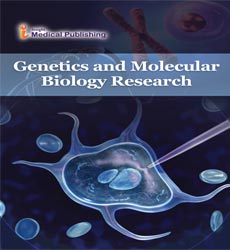AAA+ ATPase ATAD2 Signalling Networks in Gastric Cancer
Shyam Sunder Singh*
Jawaharlal Nehru Technology University, India
- Corresponding Author:
- Shyam Sunder Singh
Department of Bioinformtics
Jawaharlal Nehru Technology University, India
E-mail:divya.u@gmail.com
Received Date: December 10, 2020; Accepted Date: December 20, 2020; Published Date: December 30, 2020
Citation: Singh SS. AAA+ ATPase ATAD2 Signalling Networks in Gastric Cancer. Gen Mol Biol Rec. Vol. 4 Iss No.3: 34.
Copyright: © 2021 Singh SS. et al. This is an open-access article distributed under the terms of the Creative Commons Attribution License, which permits unrestricted use, distribution, and reproduction in any medium, provided the original author and source are credited.
Keywords Streptococcus pneumonia; pneumococcal conjugate vaccine
Commentary
Streptococcus pneumoniae can asymptomatically colonize the nasopharynx and cause a various range of illnesses. Pneumococcal conjugate vaccines (PCVs) are at present used in different countries.The aim of the study is to determine the effect of different vaccination policies PCV7/13 to that PCV10 on the carriage rates and comparing the impact of different vaccination policies in East Jerusalem (EJ) and the Palestinian Authority (PA).
Five cross-sectional surveillancesof S. pneumoniae that were carried out in EJ and PA, where two Palestinian populations with different vaccination policies were screened, with an annual average of 348 and 616 children., respectively, were performed during 2009-2016. Nasopharyngeal swabs and data were collected from children less than 5.5 years old visiting primary care physicians who visited any of three, large private pediatric clinics in Bethlehem, Nablus, and Ramallah in PA. In East-Jerusalem (EJ), PCV7 was implemented in 2009 and replaced by PCV13 in late 2010, while in Palestine (PA), PCV10 was implemented in 2011.
Swabs were streaked on tryptic-soy agar plates supplemented with sheep-blood and 5 micrograms/ml gentamycin and were incubated overnight at 35°C in 5% COâ?? enriched air to detect the presence of S. pneumoniae. Presumed colonies of S. pneumoniae were identified by morphological characteristics, such as hemolysis and optochin susceptibility. S. pneumoniae serogroup was determined by the latex agglutination testand S. pneumoniae serotype was determined and confirmed using PCR and gel-electrophoresis.
Open Access Journals
- Aquaculture & Veterinary Science
- Chemistry & Chemical Sciences
- Clinical Sciences
- Engineering
- General Science
- Genetics & Molecular Biology
- Health Care & Nursing
- Immunology & Microbiology
- Materials Science
- Mathematics & Physics
- Medical Sciences
- Neurology & Psychiatry
- Oncology & Cancer Science
- Pharmaceutical Sciences
